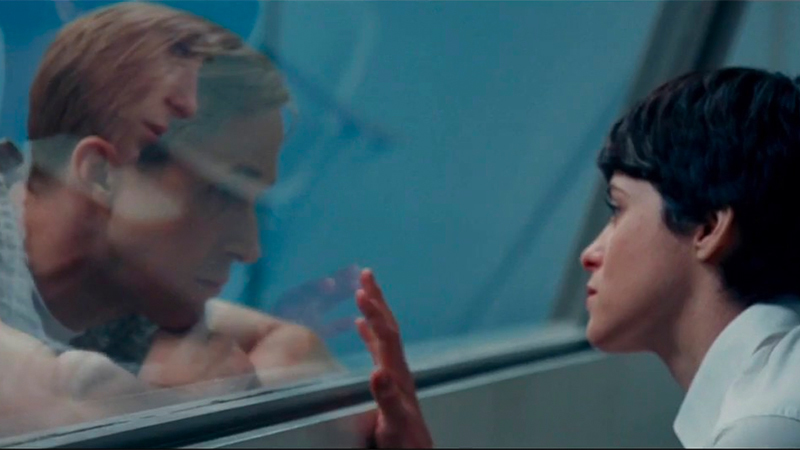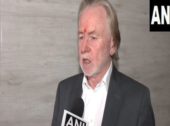Move FM movie review

First Man
Overview
Metadata
Details
Images
Actors
Starring: —First Man, director Damien Chazelle’s first feature since winning the Best Director Oscar for his exuberant, bittersweet musical La La Land (2016), is a film of intense close-ups and cramped spaces and deeply repressed emotions. Starting with his breakout film Whiplash (2014), Chazelle has been drawn to stories about characters whose drive and ambition come at the cost of their relationships, so it is little surprise that he chose to tell not the story of the U.S. Space Race, but the story of Neil Armstrong, the first man to set foot on the moon.
The title, which is taken from James R. Hansen’s carefully researched Armstrong biography, is telling about the film’s emphasis. Unlike, for example, Ron Howard’s Apollo 13 (1995), First Man is not about a particular mission, but rather uses the Space Race as a backdrop for a character study of a stoic, enigmatic man of steely determination who can keep his cool in the most fraught of situations, but is largely incapable of expressing his emotions in the presence of others. The film is, in a sense, a tragedy, and its most moving moment occurs in a scene of absolute solitude, as Armstrong stands on the edge of a moon crater, with the rest of humanity literally millions of miles away, and expresses his innermost feeling in a profoundly personal way. Watching movies is always an act of witnessing intensely private moments to which we would not be privy in real life, but this one feels particularly intimate, which is ironic given that it takes place in the midst of one of the greatest achievements of the 20th century. (Here, and only here, I’ll note the abject idiocy of all the overeager politicians and commentators who complained about the film’s lack of explicit flag-planting when they hadn’t even seen the film and therefore couldn’t understand that the moon sequence is not about dramatizing American exceptionalism, but rather a single man’s very personal moment of deeply felt grief.)
The film takes place between 1961 and 1969, the period in which the U.S. government committed itself to landing a man on the moon. We are first introduced to Armstrong (Ryan Gosling) inside the cockpit of an X-15 rocket plane miles above the Earth’s surface and almost dying for his efforts when the plane starts ‘œbouncing’ off the Earth’s atmosphere. It is not the last time that Armstrong is almost killed’”later he manages to wrangle control of a wildly spinning spacecraft as part of the Gemini 8 mission and he also has to eject at the last second from a Lunar Landing Research Vehicle before it crashes’”and he is literally surrounded by death, as many of his co-pilots and fellow astronauts are killed in various accidents (including the 1967 Apollo 1 tragedy in which three astronauts died when their cabin caught fire during a launch rehearsal test).
However, the death that haunts both Armstrong and the film is that of his not-yet-three-year-old daughter Karen, who dies of a brain tumor just before Armstrong joins NASA. We see him doing everything he can to save her, including radiation treatments that he scrupulously researches and records in notebooks. Neither his love for Karen nor his devoted efforts to treat her cancer are able to save her, and that failure hangs over him, as does his inability (or unwillingness) to talk about her death, even with his wife, Janet (Claire Foy). When he is selected for the NASA Astronaut Corps, both he and Janet view it as a ‘œnew start,’ but his unspoken grief over his inability to save his little girl never goes away, but rather buries itself deep within him, fueling his perseverance, but also always keeping him at arm’s length from those around him. Even as he develops friendships with his fellow astronauts, including Ed White (Jason Clarke) and Dave Scott (Christopher Abbott), his is always fundamentally alone’”just as he is in his triumphant moment stepping on the moon’s surface. At times this simply makes him seem aloof and introverted, but at other times he feels very nearly pathological, such as when he does everything he can to avoid talking to his adolescent sons before leaving for his moon mission because he knows there is a possibility that he might not return.
This is dangerous territory for a big-budget biopic about a historical figure routinely referred to as an ‘œAmerican hero,’ and Chazelle and screenwriter Josh Singer (Spotlight, The Post) deserve kudos for their bravery in tackling a difficult character and refusing to soft-sell his shortcomings or offer easy pabulum to the audience who might be looking for some superficial reinforcement of American greatness at a time of inordinate political discord; First Man is not a film of reassurance. This also puts Gosling in a tricky position, as he must play a character whose world is largely internal and who rarely displays emotion overtly; even when he learns that he will be commanding humanity’s first mission to the moon, he remains stoic and gives little more than a head nod in response. When reporters at a press conference try to get him to describe what he’s feeling about his soon-to-be-historic role, he says nothing more than that he is ‘œpleased’ to have been chosen. Claire Foy has the meatier role in this regard, as Janet is constantly struggling to understand and connect with her husband, who is often absent both physically and emotionally. They have moments of genuine connection, but it is almost always fraught and fleeting, in constant danger of falling apart. Just as Armstrong’s work regularly puts him in physical danger, his relationships are always at the precipice of dissolving or splintering. We don’t always understand why he acts the way he does, which some may find dramatically frustrating, but it feels true to a character who lacks the language to express the recesses deep within.
The film’s repressed emotions are set in stark contrast to the grandiosity of the technological achievements in which Armstrong played a major role (he was an aeronautical engineer before he became a pilot). Chazelle chooses to present virtually all of the film’s conventional action sequences, in which Armstrong and others test-pilot rocket planes and spacecraft, entirely within the confines of those experiencing them. That is, there are rarely if ever shots outside the planes and spacecraft (and, when there are, the perspective is tightly affixed to the body of the craft itself); rather, we are mostly trapped within them just as the characters are, feeling the intense shaking and being overwhelmed by the noise of rocket engines firing, metal plates rattling, and air pressure whooshing during rapid ascent, an almost unbearable cacophony that gives the constant suggestion that the craft is about to break apart in protest. If anything, First Man reminds us that space flight is an exhausting, raw physical ordeal, and the only time Chazelle truly steps back and allows us to feel engulfed in a sense of wonderment, rather than terror, is when they land on the moon. This sequence, shot in IMAX, is the film’s only nod to anything resembling a conventional sense of cinematic awe, and it genuinely feels earned. It’s a sequence of both surreal, otherworldly beauty and deep emotional catharsis that merely suggests, rather than guarantees, some kind of healing.
Copyright © 2018 James Kendrick
Thoughts? E-mail James Kendrick
All images copyright © Universal Pictures / DreamWorks SKG
move fm australian News
Look forward to more Indian students coming to Australia next year: Envoy Philip Green
By Ayushi AgarwalNew Delhi [India], April 23 (ANI): The...
Read MoreDNA database to help fight against illegal wildlife trafficking
SYDNEY – Scientists from Australia and the United Kingdom...
Read MoreElon Musk vs Australia: global content take-down orders can harm the internet if adopted widely
Do Australian courts have the right to decide what...
Read MoreWhat doesn’t kill you makes for a great story – two new memoirs examine the risky side of life
In the final pages of her memoir Datsun Angel,...
Read More





